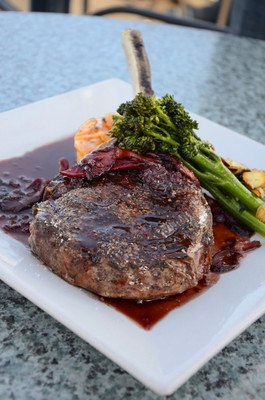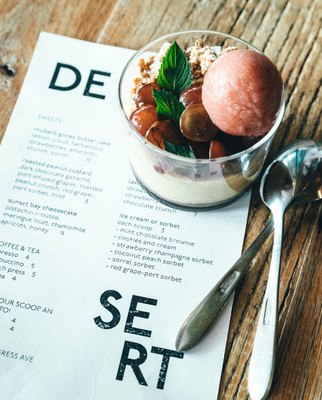Introduction
The keto diet, short for ketogenic diet, has gained immense popularity in recent years as a weight loss and health improvement strategy. This high-fat, low-carb diet aims to shift the body into a state of ketosis, where it burns fat for fuel instead of glucose. The benefits of the keto diet are numerous, from promoting weight loss to improving brain function and reducing the risk of chronic diseases like diabetes and heart disease. But to truly reap the benefits of this diet, it’s essential to understand which foods to eat and which to avoid. In this essay, we will explore the best foods to eat while on a keto diet, using sensory-rich language to create vivid mental images that will make it easy to incorporate these foods into your own meals. So let’s dive in and discover the delicious and nutritious world of keto-friendly foods!
Background

The ketogenic diet is a high-fat, low-carb diet that is designed to shift the body’s metabolism away from glucose and towards fat as its primary fuel source. When the body is deprived of glucose, which it normally obtains from carbohydrates, it enters a metabolic state called ketosis, where it produces molecules called ketones from stored fat to use as energy. The goal of the keto diet is to keep the body in a state of ketosis by limiting the intake of carbohydrates and increasing the consumption of healthy fats and proteins.
One of the main benefits of the keto diet is weight loss. Because the body is burning fat for fuel, it can more easily access stored fat cells for energy, leading to significant weight loss over time. Additionally, the high-fat content of the diet can help promote feelings of fullness and reduce hunger, making it easier to stick to a reduced-calorie diet.
But weight loss isn’t the only reason people choose the keto diet. Studies have shown that it can also improve brain function, reduce inflammation, lower blood sugar levels, and decrease the risk of chronic diseases such as diabetes and heart disease.
The basic principles of the keto diet involve limiting carbohydrate intake to between 20-50 grams per day and increasing fat intake to around 70-80% of total calories. Protein intake is usually moderate, at around 10-20% of total calories. This balance of macronutrients allows the body to enter a state of ketosis and burn fat for fuel.
It’s important to note that the keto diet is not suitable for everyone, especially those with certain medical conditions such as liver or pancreatic disease. Additionally, because the diet is so high in fat, it’s important to choose healthy sources of fats such as avocado, nuts, and olive oil, rather than unhealthy sources like fried foods and processed snacks.
Overall, the keto diet can be a powerful tool for improving health and losing weight, but it’s important to understand its basic principles and choose the right foods to support it. In the next section, we will explore the best foods to eat while on a keto diet, using sensory-rich language to bring them to life.
Foods To Eat On A Keto Diet
Meats:
Meat is a staple food in the keto diet, as it is high in protein and usually contains very few carbs. Some of the best meats to eat on a keto diet include:

- Beef: Beef is high in protein and healthy fats, making it a great choice for the keto diet. Look for grass-fed beef whenever possible, as it contains higher levels of beneficial nutrients like omega-3 fatty acids.
- Chicken: Chicken is another great source of protein that can be easily incorporated into keto meals. Choose skinless chicken breasts or thighs to keep the fat content under control.
- Pork: Pork is a versatile meat that can be cooked in a variety of ways, making it a great addition to any keto meal plan. Look for lean cuts like pork tenderloin or pork chops.
- Fish: Fatty fish like salmon and tuna are excellent sources of healthy fats and protein. They also contain omega-3 fatty acids, which are essential for overall health.
Vegetables:
Vegetables are an important part of any healthy diet, and the keto diet is no exception. However, it’s important to choose vegetables that are low in carbs to stay within the limits of the diet. Some of the best vegetables to eat on a keto diet include:
- Leafy greens: Spinach, kale, and other leafy greens are low in carbs and high in nutrients like vitamin K and iron.
- Cruciferous vegetables: Vegetables like broccoli, cauliflower, and Brussels sprouts are high in fiber and low in carbs, making them a great choice for the keto diet.
- Avocado: While technically a fruit, avocado is high in healthy fats and low in carbs, making it a great addition to any keto meal.
Fats:
Fats are an essential part of the keto diet, as they provide the majority of calories and help keep the body in a state of ketosis. However, it’s important to choose healthy sources of fats to avoid negative health effects. Some of the best fats to eat on a keto diet include:
- Olive oil: Olive oil is high in healthy monounsaturated fats, which have been shown to improve heart health and reduce inflammation.
- Coconut oil: Coconut oil is high in medium-chain triglycerides (MCTs), which are easily converted into ketones by the body and used for energy.
- Nuts and seeds: Nuts and seeds are high in healthy fats and protein, making them a great snack or addition to a keto meal. Some good options include almonds, walnuts, and chia seeds.
Overall, the keto diet can be a great way to lose weight and improve health, but it’s important to choose the right foods to support it. By incorporating healthy sources of protein, vegetables, and fats, and avoiding processed and high-carb foods, it’s possible to maintain a healthy and satisfying diet while on the keto plan. To get started, try incorporating some of these foods into your own meal plans and recipes.
Foods To Avoid On Keto Diet

To maintain a keto diet successfully, it’s essential to avoid certain foods that can prevent the body from entering or maintaining ketosis. These foods include grains, which are high in carbs and not suitable for the keto diet. Some low-carb alternatives are available, but they may contain artificial ingredients. Sugars, such as table sugar, honey, and maple syrup, are also high in carbs and can cause blood sugar levels to spike, preventing the body from entering ketosis and leading to weight gain and other health problems.
Fruits
Fruits are generally considered healthy, but some can be high in sugar and carbs, making them unsuitable for the keto diet. Bananas, grapes, and mangoes are some examples of fruits that should be avoided. Starchy vegetables like potatoes, corn, and peas are also high in carbs and should be avoided. Instead, focus on low-carb options like leafy greens and cruciferous vegetables that are nutrient-dense and low in carbs.
Processed Food
Processed foods like chips, crackers, and candy are typically high in carbs and should also be avoided on a keto diet. Instead, choose whole, unprocessed foods that are low in carbs and high in nutrients. By avoiding these high-carb and sugary foods, it’s possible to keep the body in a state of ketosis and enjoy the many benefits of the keto diet, including weight loss, improved energy levels, and better overall health.
Remember that a sustainable keto diet involves choosing whole, nutrient-dense foods that are low in carbs and high in healthy fats and protein. With a little planning and effort, it’s possible to follow a keto diet successfully and enjoy all the benefits it has to offer.
Tips for Maintaining a Keto Diet

Maintaining a keto diet can be challenging, but the benefits are significant. To stay on track, it’s important to plan ahead and make a list of keto-friendly foods and ingredients. This way, you can avoid reaching for high-carb or sugary foods when hunger strikes. Meal planning can help you stick to your diet and achieve your health goals.
Meal Planning
In addition to meal planning, it’s crucial to keep healthy snacks on hand. Temptations can be high when hunger strikes, but by keeping keto-friendly snacks like nuts, seeds, or low-carb veggies with dip, you can avoid cravings for high-carb foods. These snacks will help you stay satiated between meals and ensure that you’re sticking to your keto diet.
Cooking
Cooking your own meals can also help you control the ingredients and ensure that you’re following a keto-friendly diet. Experiment with new keto recipes, try different spices and flavors and enjoy the process of cooking and creating delicious, healthy meals. This can help you stay motivated and committed to your keto diet.
Hydration
Staying hydrated is also essential on a keto diet. Drinking plenty of water can help you stay satiated and prevent cravings. Aim for at least 8-10 glasses of water per day, and consider adding electrolytes to your water to help prevent dehydration. This will help you feel your best and stay on track with your keto diet.
Motivation
Finally, staying motivated and committed to a keto diet can be challenging, especially if you’re used to eating a high-carb diet. Setting achievable goals, tracking your progress, and celebrating your successes along the way can help you stay motivated. Surrounding yourself with supportive friends and family members, and seeking out keto-friendly communities and resources for additional support and inspiration can also make a big difference.
By following these practical tips for maintaining a keto diet, you can overcome the challenges and reap the many benefits of a low-carb, high-fat lifestyle. Remember, a keto diet can be a sustainable and enjoyable way of eating, as long as you’re mindful of your food choices and stay committed to your health and well-being.
Conclusion
In conclusion, a keto diet can provide numerous benefits for individuals looking to improve their health and well-being. By limiting carbohydrate intake and increasing fat consumption, the body enters a state of ketosis, which can lead to weight loss, improved energy levels, and enhanced mental clarity.
It’s important to understand the best foods to eat while on a keto diet, as this can help to maximize the diet’s benefits. In this essay, we have discussed the top foods to eat, including healthy sources of protein such as grass-fed meats and seafood, low-carb vegetables like leafy greens and cruciferous vegetables, and healthy fats such as avocado and coconut oil.
At the same time, it’s also important to avoid high-carbohydrate and sugary foods, which can derail progress and make it difficult to achieve the full benefits of a keto diet. Examples of foods to avoid include processed foods, grains, and sugary beverages.
Maintaining a keto diet can be challenging, but with the right strategies, it is certainly achievable. Some tips to consider include meal planning and preparation, staying motivated by tracking progress, and finding ways to make the diet work for your lifestyle.
Incorporating these foods into your own diet can provide numerous benefits for your health and well-being. By adopting a keto diet and making smart food choices, you can achieve your health and fitness goals and experience all the benefits that come with being in a state of ketosis.
Take the first step by trying out some of the delicious meal plans and recipes included in this essay. With commitment and dedication, you can make the keto diet a sustainable and enjoyable part of your lifestyle.

Melissa Dior
This keto article was incredibly informative and well-written. It provided a detailed and thorough explanation of the benefits of a ketogenic diet, including weight loss. You also offered helpful tips on successfully transitioning to a keto diet and maintaining it long-term.
Overall, this article was a fantastic resource for anyone interested in the keto diet. It was easy to understand and provided practical advice that could be implemented immediately. I highly recommend giving it a read!
Daniella
Hi there,
Great article; I loved the reading. I need to lose weight, and last year I tried a low-carb diet, but I didn’t lose even one pound. Quite the contrary, I gained weight. I must have done something wrong. So, I am going to try the Keto and hope this time I will love my extra kilograms. Just a small question, if you don’t mind. What are the potential health benefits and risks of following a keto diet?
Thank you so much!
Joseph
Great question. The main cons of following the Keto Diet are, nutrient deficiencies, Keto flu and potential digestive issues.